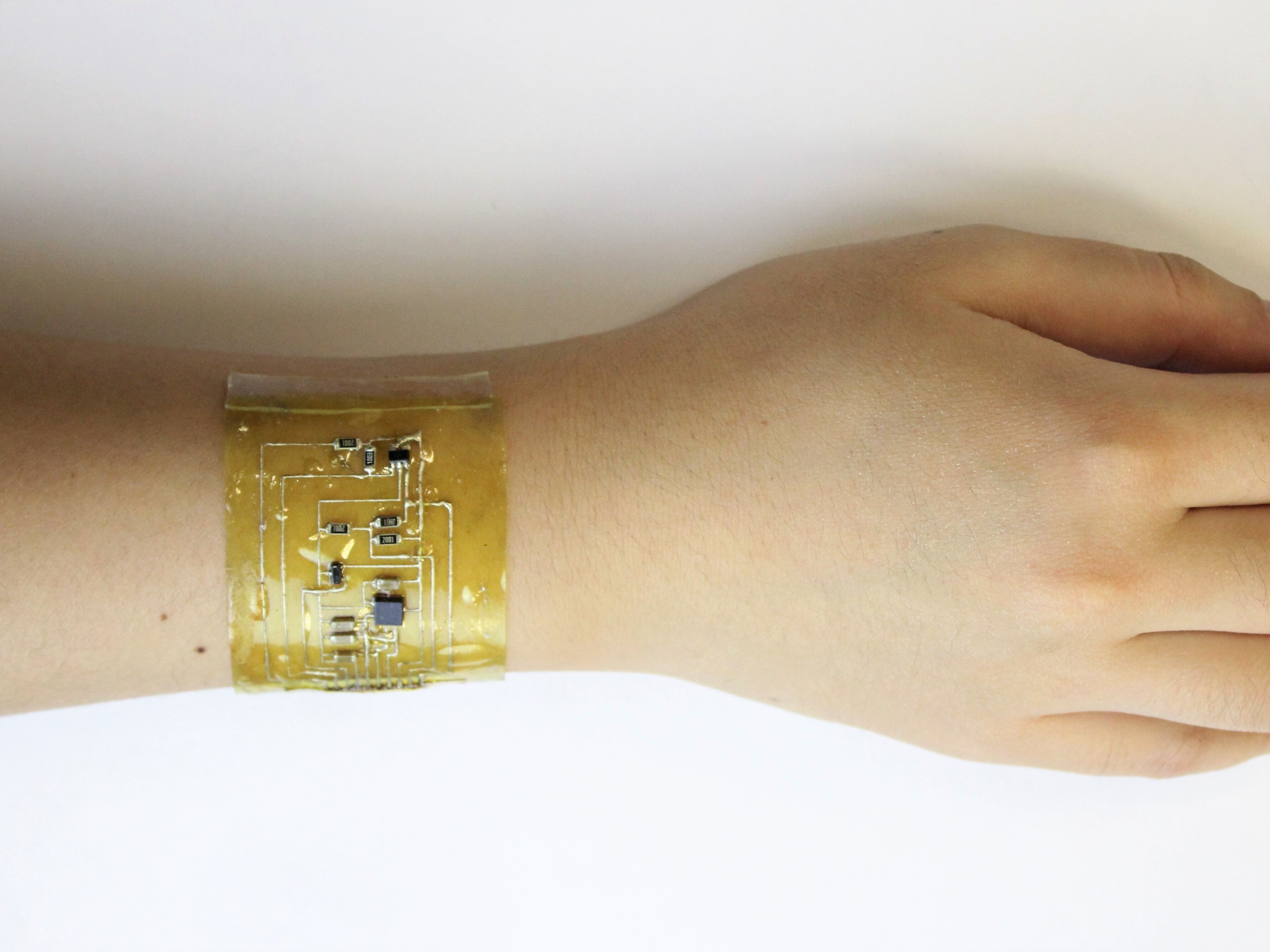Self-healing ‘electronic skin’ could replace smartwatches, researchers claim
Thin and flexible circuit board can be worn on any part of the body

Researchers have developed a form of “electronic skin” that they claim could herald a new era of cheap and recyclable alternatives to wearable devices.
The thin and flexible circuit boards are self-healing and can be worn on any part of the body to track metrics like heart beat and step counts.
Electronic engineers and scientists from the University of Colorado Boulder who developed the technology said it could “reimagine what wearable devices are capable of”, while significantly cutting down on electronic waste.
“If you want to wear this like a watch, you can put it around your wrist,” said Jianliang Xiao, a mechanical engineering associate professor at the University of Colorado Boulder.
“If you want to wear this like a necklace, you can put it on your neck… It’s really stretchy, which enables a lot of possibilities that weren’t an option before."
The team has improved and perfected the electronic skin after previously describing a concept for a stretchy electronic film in 2018.
It works by sandwiching circuits between two thin films made of a highly flexible and self-healing material called polyimine.
The resulting device is slightly thicker than a plaster that can be applied to skin using heat.
“Smartwatches are functionally nice, but they’re always a big chunk of metal on a band,” said Wei Zhang, a professor in the Department of Chemistry at the university.
“If we want a truly wearable device, ideally it will be a thin film that can comfortably fit onto your body.”
A research paper describing the innovative technology was published in the scientific journal Science Advances on Friday.

Join our commenting forum
Join thought-provoking conversations, follow other Independent readers and see their replies
0Comments